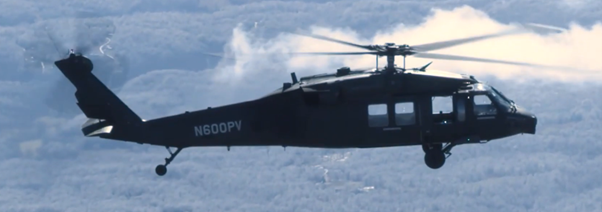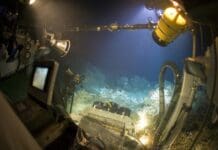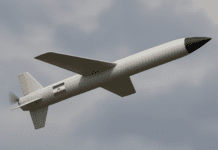This post is also available in:
 עברית (Hebrew)
עברית (Hebrew)
Flying helicopters in contested environments is becoming increasingly hazardous, particularly as modern air defenses and electronic warfare systems grow more advanced. Traditional crewed operations put pilots at risk, while manual control limits operational flexibility. Addressing these challenges, U.S. researchers have demonstrated a new method for piloting the UH-60 Black Hawk remotely using only a touchscreen display.
The demonstration showcased the US Army’s Secretary guiding a UH-60 through a live video feed from sensors onboard the aircraft. The Black Hawk was equipped with DARPA’s Aircrew Labor In-Cockpit Automation System (ALIAS). ALIAS integrates fly-by-wire controls, sensor fusion, machine learning, and automated mission planning to provide advanced autonomous functions. This enables the helicopter to operate with reduced or even zero crew on board while still allowing remote human oversight.
Unlike earlier fully autonomous test flights in 2022, this demonstration emphasized human-operator control from a distance. The secretary directed the helicopter through a tablet-linked console, with ALIAS handling the complex dynamics of flight and navigation. The system’s interface simplifies operations, allowing the operator to focus on mission tasks rather than manual piloting. The helicopter automatically adjusts for stability, path planning, and obstacle avoidance while maintaining continuous video and sensor feedback.
According to Interesting Engineering, key technological features include a fusion of onboard sensors providing real-time situational awareness, an autonomy suite capable of executing mission segments without constant input, and a teleoperation interface that translates high-level commands into precise flight maneuvers. Previous demonstrations, such as the MATRIX system shown at the 2024 AUSA conference, highlighted the Black Hawk’s ability to carry out autonomous missions after receiving operator instructions.
Beyond civilian applications, this capability has clear defense relevance. Remote operation allows Black Hawks to conduct logistics, reconnaissance, and support missions in high-risk areas without endangering crews. It also enables safer insertion and extraction in contested airspace, while accelerating the adoption of autonomous aviation for legacy military platforms. DARPA plans to continue field testing, cybersecurity hardening, and doctrinal development as it moves toward operational deployment.
The demonstration signals a step forward in integrating autonomy with human oversight, transforming the decades-old Black Hawk into a platform capable of remote and semi-autonomous operations in modern conflict environments.


























